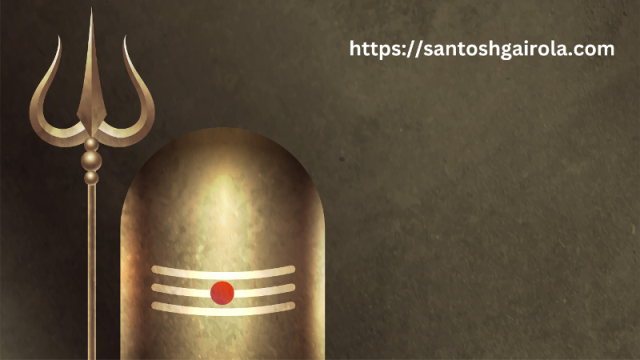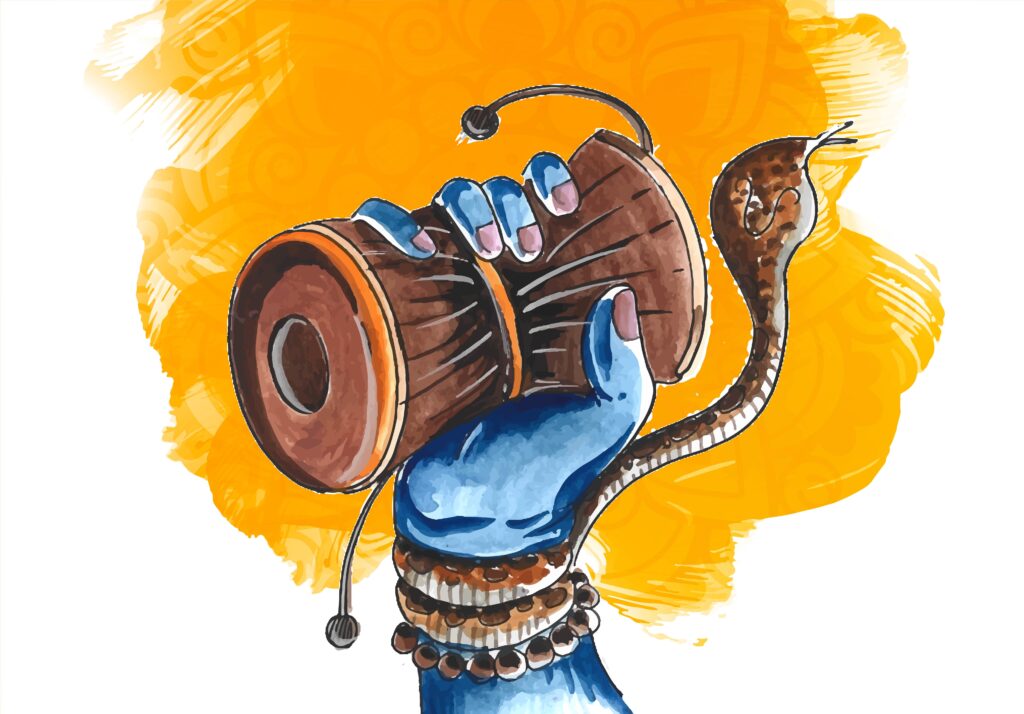Buy new: (Paperback)
UK 
Buy new: (Paperback)
Canada 
Buy new: (Paperback)
USA 
Order My Book From Amazon

Do you want to know who is Lord Shiva?
This post will explain all the details about Shiva and the significance of Lord Shiva in Sanatan Dharma.
Hinduism is the most ancient culture of the world [Ebook Kobo store], whose foundations are on the scientific grounds. But Hinduism is not the actual name of the culture and neither it is a religion. The authentic name of this beautiful culture is Sanatan Dharma.
So the question comes to many people’s mind, What is Sanatan Dharma and What does Sanatan Dharma represent?
Sanatan Dharma is a Sanskrit word that means “eternal responsibility” that doesn’t denote a religion because Sanatan Dharma doesn’t have a founder like other religions. And the fascinating thing is there is no specific book about this culture. They have many, as per their scientific investigation and data gathered from those proven researches, that allow people to seek the inner transformation and live a free life from all the affliction.
The good thing about Sanatan Dharma is there is complete liberty to follow faith and trust in the one supreme consciousness present in everyone. It is the reason people are free to worship the supreme god in many forms because they believe that god is in the heart of everyone.
In that way, we all are divine and free to choose our life’s purpose. But the greater intention behind our purpose should be to serve humanity and create a better world for everyone. It is the Dharma of every Sanatani when leads them on the path of righteousness.
Here, Dharma represents the duties and commitments. For example, the responsibility of the head of the family is to protect the family from any external threat. The Dharma of a flowing river is to satisfy the thirst of the animals. Therefore, Sanatan Dharma is a way of life that helps the followers to live a prosperous and harmonious life with nature.
Therefore, when someone calls people Sanatani or Hindus, they refer to eternal obligations that are ancient and never die. To fulfill those obligations, people need respective power or energy. And to seek these powers, there are many godheads in Sanatan Dharma. But the intriguing thing is all are the manifestation of the one supreme lord who is shapeless, formless, and known as NirakarBrahm.
Thus, all the other deities are the personification of one supreme consciousness. Lord Shiva is the elemental one in the entire culture and is regarded as the highest form of divinity in Sanatan Dharma.
Friend, subscribe to our newsletter to receive ancient wisdom straight to your inbox!

Shiva is one of the principal deities of Hinduism. The literal meaning of the name Shiva is – ‘The Auspicious One, propitious, gracious, benign, kind, benevolent and friendly’.

Lord Shiva has two forms. The first one is shapeless and intangible, called as SadaShiva. No one can directly connect with that form of shiva, as it is beyond everyone’s perception.
Shiva’s Lingam is the depiction of Lord Shiva’s infinite form, which is formless and represents the first cosmic spore called Hriyangarbha.
Therefore, Shiva manifested his second form, known as Shankara, which allowed others to connect with him. It has all the physical attributes, which makes him easily accessible to all.
In the physical attributes of Shiva, he has a serpent king Vasuki around his neck, the adorning crescent moon on his head, the holy river Ganga flowing from his matted hair, the third eye on his forehead (depicting sixth sense also known as the eye that turns everything in front of it into ashes when opened). He has the trishula, or trident, as his weapon in one hand and holds a small drum instrument known as the Damaru.

The significance of Lord Shiva in Sanatan Dharma is that there is a particular sect dedicated only to Lord Shiva in Sanatan Dharma. We know it as Shaivism, where Shiva is the Supreme Being.
Thus, in the Shaivite tradition, Shiva is the Supreme lord who creates, protects, and transforms the universe.
One of the most famous names for Shiva is Mahadeva, which literally means – ‘The Great God’. Shiva has many other names.
The following are the most common ones:
Shankara
Som Dev (God of the Moon)
Maheshvara
Mahadeva (The Great God)
Shambhu
Viswanatha (lord of the universe)
Hara
Trilochana
Pashupatinath ( the father and protector of all animals)
Devendra (chief of the gods)
Neelakanta (literally means blue neck, since he drank poison)
Trilokinatha (lord of the three realms)
Nataraja (Lord of Dance)
Ardhanarishvara (half man half woman)
These are the few names commonly used by Shiva devotees. But the list of lord Shiva’s names is humongous. So, Lord Shiva has many forms and is known by various names.
One such significant form of Shiva is Ardhanarishvara, which means the lord who is half woman and half man. This aspect of Shiva represents gender equality.
Therefore, this form has one half of the body as male and the other half as female. Ardhanarishvara represents the synthesis of masculine and feminine energies of the universe and illustrates how Shakti (energy: ultimate female goddess) is inseparable from Shiva, the male principle of God.
God, Shiva is a Swayambhu, which means he is unborn, immortal, and all-knowing. Indeed, he self-manifested himself. He was there when there was nothing and he will remain once when everything ends. That is why; he is also loving called ‘Adi-Dev’, which means the ‘First God of the Sanatan Dharma.
Once, Shiva told a sage that the creator of the universe, Lord Brahma, is his father. Then sage asked again, who is the father of Lord Brahma?
Lord Shiva politely answered the sage that Brahma was born from a lotus emerging from the navel of the god Vishnu. Therefore, Lord Vishnu is the father of Lord Brahma.
The sage got enthusiastic and asked, then who is the father of Lord Vishnu?
And Shiva answered with a sweet smile. I’m myself, the grandfather of Lord Vishnu.
The story confused the sage, so he finally asked Lord Shiva, “My lord, I’m confused; could you describe me? Who is the supreme god in Sanatan Dharma?”
Lord Shiva answered, “There is only one supreme lord who is formless and shapeless. He is the primary source of all the energies and events happening in the world. He is SadaShiva; you can also call him AdiParaShakti.
I’m that SadaShiva who manifests myself in various forms and shapes. So, I’m Vishnu, I’m Shiva, and I’m Shakti. Everything emerges from me, and goddess Shakti is my consort, who completes me. It’s on you how you want to perceive me. I’m in everyone, and everyone is in me.”
Also Read:
Lord Shiva is the spouse of the goddess Shakti. We know Shiva as the mightiest of the mighty lords and the epitome of all the liveliness. As already told, goddess Shakti is the loving wife of Lord Shiva. She resides in Shiva’s heart as Bhavani and is revered all around the globe as the personification of physical strength.
Therefore, Shiva and Shakti are the flux of the energy, so based on that, energy is always divine. It is the true essence of dark energy and dark matter. In fact, their combined energy work as complementary wave and particle theory.
So, energy can neither be created nor destroyed. But, it is transformative and can transform into another form. That godly energy can be constructive or destructive, based on your deeds or how you want to use it. Sanatan Dharma regards energy as a formative instrument to live a highly uplifted life. Meanwhile, a common notion of energy is, it also has destructive power.
Hence, in that perspective, Shiva is known as the destroyer. But that is not the entirety of what powers Lord Shiva has. It is just one aspect of his multi-facet. In popular Hindu belief, Shiva is the destroyer who ends the cycle of time and, in return, begins a new creation. Hence, Lord Shiva is the ultimate liberator, encompassing eternity and infinity.
When energy is accumulated as positivity and emits positive vibes, then energy gives rise to creation. Similarly, when energy or power is misused and gives rise to negativity, it turns everything into destruction. That is the primary message that Lord Shiva teaches.
Thus, he has two major versions in which he is depicted. The divine, omnipotent, most loving, and donning heart of Lord Shiva showed the positive channeling of energy, making him the ideal exemplar of what a perfect man should be.
His stories of being the perfect husband to his wife, Goddess Parvati (Goddess Shakti, Bhavani), and an excellent father of the universe and all its creations, including humans and animals, show how energy can be ushered into all things positive.
The depiction of his wrath, his destruction, and sagas of his anger prove how that same energy can cause destruction and finish everything.
One of the prime examples of it. When Shiva once opened the third eye of his forehead and burned the Kam deva (the deity of desire), who tried to distract Shiva’s concentration.
The incident teaches everyone that one should crush material desires to achieve their goals in life. Lord Shiva is the master of all the traits and virtues. Therefore, chanting the name or the mantra of Lord Shiva frees a person from all the darkness and evil intentions.
Thus, Shiva teaches us the importance of controlling our emotions, actions, and energy to procure something good out of it instead of losing control to losses our primary goal.
Another name of Lord Shiva is Pashupatinath, which means father and protector of all beings (animals, humans). Giving us a sense of understanding that Shiva is the lord of all things and different consciousness. And that sermonizes us to have compassion towards all beings of nature.
Lord Shiva’s significance extends beyond religious boundaries, affecting art, philosophy, and cultural practices.
As the Lord of Dance, Nataraja, Shiva symbolizes the cosmic dance of creation, preservation, and destruction, underscoring the interconnectedness of life’s various aspects.
In conclusion, Shiva, one of the principal deities in Hinduism, reveals a multifaceted and profound figure that embodies both destruction and creation. Along with that, Lord Shiva is the greatest giver and protector of the world.
It is a well-known belief that anyone who sincerely prays and worships Lord Shiva and follows his righteous paths will always benefit from his prayers. Lord Shiva answers and fulfills all their wishes.
Lord Shiva is a timeless source of inspiration and contemplation, inviting individuals to delve into the deeper realms of spirituality and self-discovery.
Sharing is caring!
Friends, your every share motivates us to write more spiritual content for all the readers and helps the search engine algorithm reach the right audience. We are grateful for all your kindness and support.
Or you can also follow us on Facebook Author page
Aum Namah Shivaya

Santosh Gairola is an Indian-origin Author, Educator, & Blogger. He is an adherent devotee of Lord Shiva and Lord Hanuman.
Subscribe to our free newsletter, and unlock the best spiritual and devotional articles.

At Santosh Gairola dot com, I enjoy suggesting highly rated books on Lord Shiva, Sanatan Dharma, and more to aid in discovering inner peace.
The Magnificent Shiva: Why there is no one like Lord Shiva? Paperback
Lord Shiva Book

Buy new: (Paperback)
UK 
Buy new: (Paperback)
Canada 
Buy new: (Paperback)
USA 
Share via:
Subscribe to our newsletter